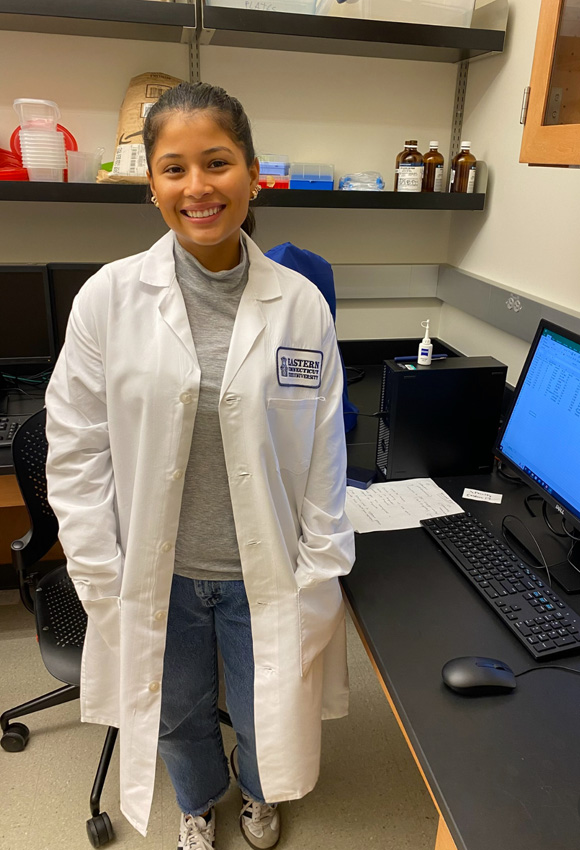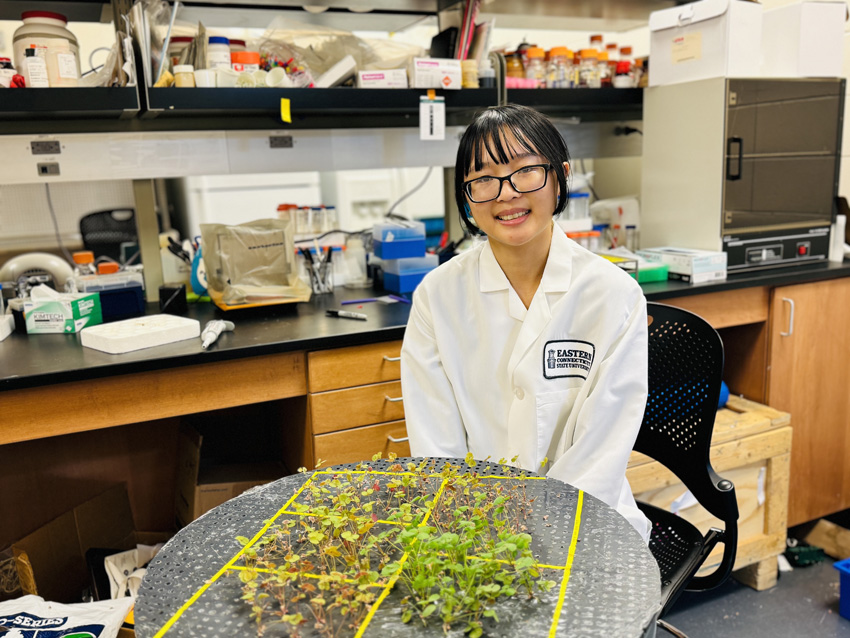- Apply
- Visit
- Request Info
- Give



Published on October 21, 2024
Two senior biology students from Eastern Connecticut State University have been selected to present their research at the Annual Biomedical Research Conference for Minoritized Scientists (ABRCMS) this Nov. 13 – 16 in Pittsburgh, PA. Nancy Avalos and Anne Le’s research will cover critical global health and environmental challenges.

According to biology Professor Vijaykumar Veerappan, who oversaw Le’s research, ABRCMS is a prestigious conference dedicated to diversifying the STEM field and uplift historically marginalized groups in the science realm.
“ABRCMS is an excellent biomedical research conference for underrepresented undergraduate and postbaccalaureate students,” he said. “Acceptance is highly competitive because abstracts are reviewed for quality. Attending this conference will help Le and Avalos to network with other students.”
Avalos's research, titled “Understanding the Interactions Between Group B Streptococcus (GBS) and Candida albicans (C. albicans): A Proteomic Approach,” deconstructs the variation in interactions between these pathogens. Her research highlights severe co-infections impacting vulnerable populations, such as neonates and immunocompromised patients.
“We observed that C. albicans increases the growth and survival of GBS in specific media, which suggests a synergistic relationship that may contribute to infection severity,” Avalos said. “These findings offer new insight into potential biomarkers for early detection and possible therapeutic targets to improve clinical outcomes in at-risk patients.”
Avalos conducted her research during the summer of 2024 at the University of Arizona by using advanced proteomics and data analysis tools, such as R-Studio, to identify parts of the pathogens that cause infection. “These findings offer new insights into GBS-Candida co-infections and point to potential biomarkers for early detection,” she said.

Le’s research, titled “The Characterization of Mutants Defective in Symbiotic Nitrogen Fixation in the Model Legume Plant Medicago truncatula,” focuses on sustainable agriculture by exploring how legume plants grow without synthetic fertilizers, unlike many commercial crops used for food. Through her work, she aims to assist in reducing environmental pollution and making agriculture more sustainable.
“The overuse of synthetic fertilizers leads to harmful environmental effects, like runoff, algae blooms and contaminated drinking water,” said Le. “The end goal of my research is to engineer the genes that control SNF into non-legume plants that we eat to reduce the use of synthetic fertilizers.”
Written by Elisabeth Craig '26